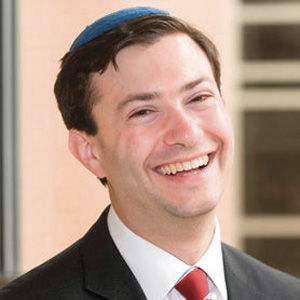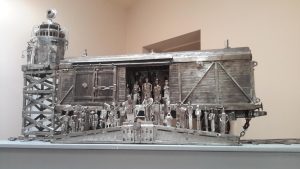Leave the symbols on for all to see
Published March 21, 2019
I feel like I’m always walking around my house turning off lights in empty rooms. It bugs me to waste electricity, to waste money, lighting rooms unnecessarily. I do the same thing at my synagogue, too.
But there’s one light at synagogue that never goes out: the ner tamid, or eternal light, that hangs in front of the ark. It doesn’t use a lot of electricity, but I want do a thought experiment with you for a moment. What if that particular light was really expensive? Should a synagogue spend whatever it takes to keep an eternal light lit?
As it turns out, it’s not a commandment, a mitzvah, for a synagogue to have an eternal light; there are, in fact, synagogues that do not have them. But for many communities, it’s a strong custom.
ADVERTISEMENT
Now, a ner tamid doesn’t provide any particular benefit. It doesn’t sufficiently light the room; it doesn’t warm the room. You don’t need it to read on or read from. One never does anything with it. It’s just there. On. But it is a representation of the fire that was supposed to burn in the Tabernacle, then the Temple, all the time, as described in Leviticus 6:2.
But as it turns out, several fires were burning in the Temple at any given moment, at least according to some opinions in the Talmud. There was the fire on the altar for burning sacrifices. There was another fire that was used for incense. And there was a third fire that needed to be kept burning all day and all night and never go out.
We can understand why the first two fires are necessary. But the third? A fire that has no use? It’s constantly using wood, an expensive commodity in the ancient (and modern) Middle East. This fire is a costly, seemingly useless waste.
ADVERTISEMENT
And yet, I imagine that to the ancient Israelites, it was a symbol of their success and the grandeur of the Temple. I’m reminded of Tevye singing in “ Fiddler on the Roof” how, when he’s a rich man, he’ll have “one long staircase just going up, and one even longer coming down, and one more leading nowhere just for show.”
But unlike Tevye’s dreamed-of staircases, the fire was not only a symbol of affluence; it was a symbol of the Israelites’ dedication to God and God’s commandments.
It’s precisely costly things like this ever-burning fire that the unusual word tzav (command), the first word in this week’s Torah portion, is reminding us about. This is suggested by a long rabbinic tradition beginning in the third century with Rabbi Shimon in the earliest rabbinic commentary on Leviticus and continuing with Rabbi Chayyim ibn Attar, who lived in Morocco in the 18th century. We just need things like that extra fire, ibn Attar suggests, because God commanded them.
What might be the modern parallels to this? Are there certain things constitutive of Jewish community that it’s the community’s responsibility to maintain, even at great cost, that serve no practical function? Are there symbols that we are still ready to spend on? The utilitarian and humanist in me aches at these kinds of expenditures. And the Jew and rabbi and human in me delights in these symbols.
May we always be able to afford the symbols that inspire us.
Rabbi Noah Arnow serves Kol Rinah and is President of the St. Louis Rabbinical Association, which coordinates the Jewish Light’s weekly d’var Torah.
















